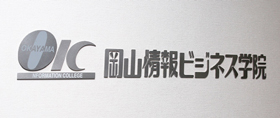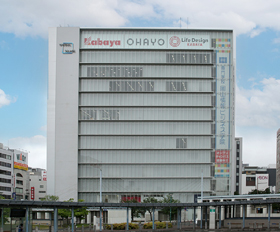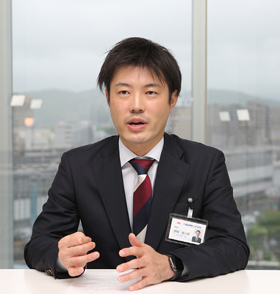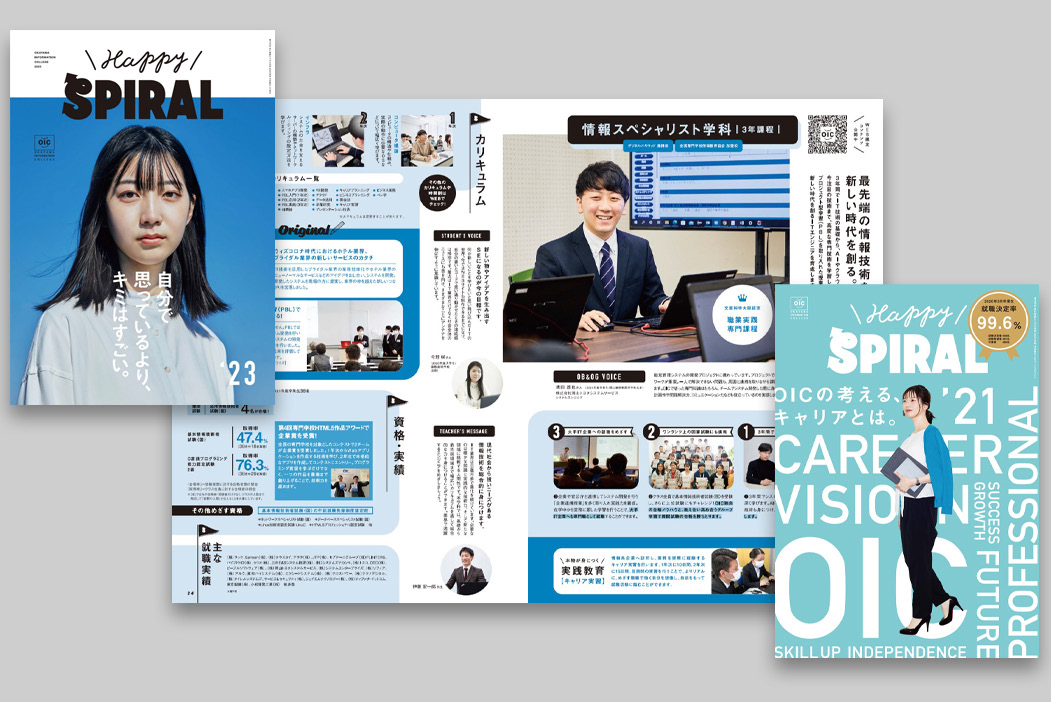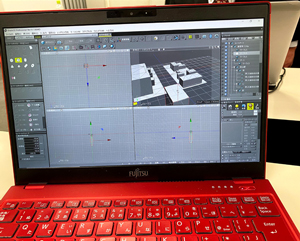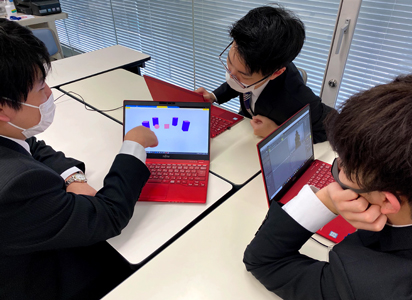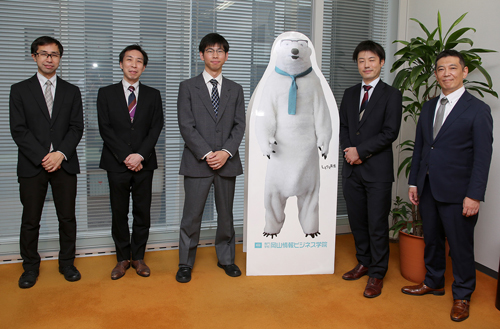|
||||||||||
|
||||||||||
Focusing on Humanistic Education Along with Specialized Areas Okayama Information College (OIC) was established in 1985 by Sanyu Educational Group, one of the group companies with Nippon Kabaya Ohayo Holdings Inc. (headquartered in Okayama City) as its core. In the following year of 1986, the school opened as "Private School Okayama Information College" and changed its name to the current one when it was approved as a professional training college by Okayama Prefecture in the same year. Mr. Ito believes that OIC aims to help students develop not only specialized knowledge and skills, but also the "human skills" to put them to use, so that they can survive in uncertain times and grow into adults who can live independently in society after graduation. Since its opening, the school has been responding to the needs of high school students in the prefecture for specialized education as well as the needs of working adults to relearn, expanding departments and collaborating with other schools and companies, and has collected a plenty number of students (12,000 students in total) who are seeking specialist jobs. The school currently consists of the following 14 departments: 1) Medical and Welfare Administration, 2) Health Information Management, 3) Hotel and Bridal, 4) Management Assistance, 5) Civil Servants, 6) Intensive Learning of Civil Servants, 7) Childcare, 8) Information Specialists, 9) Information Systems, 10) Game Creators, 11) Game Programmers, 12) Data Marketer, 13) Internet/Video Creators, 14) Computer Graphics Design, and 15) International IT Systems for international students. Approximately 1,100 students in all departments are enrolled in the school building completed in 2006 adjacent to Okayama Station. Two Information-systems-related Depts Adopting Shade3D As mentioned at the beginning, Mr. Ito, who has embodied the adoption of Shade3D in OIC's curriculum, is involved in supporting multiple Depts. from the aspect of college administration and leads two Depts. as their head. One of them is the Dept. of Information Specialists, which offers a three-year course of study on the fundamentals of information technology (IT) as well as advanced specialized technologies such as artificial intelligence (AI), virtual reality (VR), and cloud computing, with an eye toward Society 5.0. Aiming at not only knowledge but also developing practical skills, the curriculum consists of three pillars: 1) acquisition of certifications such as Fundamental Information Technology Engineer Examination (FE) and Applied Information Technology Engineer Examination (AP), 2) broad and deep study of technologies such as front-end, server-side, and infrastructure essential for application development, and 3) project-based learning (PBL), in which students think of ways to solve business challenges in the real world and at school. The Dept. of Information Systems, on the other hand, aims to train students to become ready-to-work professionals in a limited two-year course. Therefore, students first learn the fundamentals of IT. Then. aiming to acquire specialized knowledge, the students are divided into three majors as follows: 1) "System Development" to acquire qualifications for system development or national qualifications; 2) "Mobile Application" to develop applications in mobile-based languages to realize one's own idea, and 3) "Computer Control" to learn programming to control machines and robots that actually work in factories. It is the realization of learning that takes advantage of students' independence that is common to both Depts. For example, both aim to develop engineers who can be ready-to-work professionals by acquiring the ability to think and practice on their own based on solid IT knowledge. Currently, about 50 first-year students are enrolled in the Dept. of Information Specialists and about 80 first-year students are enrolled in the Dept. of Information Systems. Both of the Depts. have four full-time lecturers respectively, and additionally invite part-time lecturers as needed for cutting-edge classes such as VR. Attention Focused on FORUM8's VR Solutions, for Establishing Special Lectures and Classes Using Shade3D In the winter of 2020, then-OIC Managing Director and Educational Affairs Section Chief attended a lecture by FORUM8 held at a member school of the National Association for Technical College Education (Zensenken). There, the aspect of utilizing VR not as a game element but in the field of business attracted their attention, and they proposed to incorporate various VR solutions of FORUM8 into the College classes to Mr. Ito. He once again examined a variety of product lineups, considering their consistency with the curriculum structure of each of the departments he was in charge of and the constraints of the study period. It was so intended as to develop the JavaScript that was instructed as a curriculum for the front-end field and to allow students to create 3D scenes on the browser using babylon.js, which is the framework of JavaScript, and to experience of running 3D models created with Shade3D.
In response to this special lecture course, they decided to incorporate a VR class into the regular curriculum for the 2021 academic year and established "VR Development" as a first semester class (April to July) for third-year students (about 40 students) of the Dept. of Information Specialists. As a protective measure against COVID-19 was also required, all Forum8 staff lecturers and students participated in the class online. In the first three months of the class, students took technical exercises including the basic way to use Shade3D and how to do modeling, as well as how to operate models using JavaScript. In the final month, students worked on a set theme using a team development approach, from creation of works to presentation of them. With these achievements as a backdrop, they wanted to "let students continue their VR experience" and held the special lecture course in February and March 2022 with the same structure as the previous year. New third-year students (approximately 50 students) from the Dept. of Information Specialists and new second-year students (approximately 60) from the Dept. of Information Systems participated the course. Shade3D impressed Mr. Ito for its sense of speed and ease of use although it was the first modeling tool for the students to use in the lecture for a short period of time. Utilization of Technologies as a Means to Be Aimed Considering the potential of VR While noting that the entertainment aspect of VR, including the Metaverse, has been in the spotlight recently, Mr. Ito refers to its potential as a means of solving the business problems of the customers and providing new value targeted by the Depts. in his charge. Among the diverse kinds of VR solutions of FORUM8, he originally focused on "F8VPS," which is applicable to various usages such as web-based virtual showrooms, work training, and telework, using communication tools such as avatars in a 3DVR-constructed space. For example, if business scenes from various Departments at OIC could be reproduced in VR using F8VPS, it would transcend boundaries among the Departments, improve the research and development capabilities of students of information-related Departments, and bring about a wide range of synergistic effects within the College. Shade3D was introduced from a viewpoint that it is important for students to be able to use it at an early stage as a fundamental tool for the creation of a virtual platform. "What I tell students on a daily basis is how to make the most of technology as a means." As VR and other new technologies rapidly develop and spread in recent years, "we want students to be aware of 'what is the purpose of using this technology?' and 'for whom is it used?', and to develop the ability to think about things from the user's point of view. In the class using Shade3D, students experienced the process of giving shape to their ideas, and I would like to train them into engineers who can think about 'how the customer will feel when they see it' and 'whether this leads to solving the customer's problem,' and have various 'drawers' as a means to realize these ideas. In this sense, through this class and the special lecture course, the students' knowledge and the range of their problem-solving responses should certainly have been broadened," says Mr. Ito. "I hope that the students will actively engage with the new technologies to come with curiosity."
|
||||||||
| (Written by Takashi Ikeno) (Up&Coming '22 Summer issue) |
|
|||||
